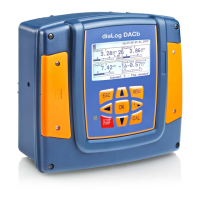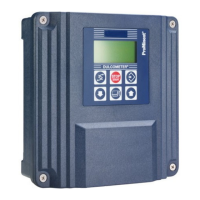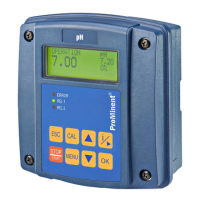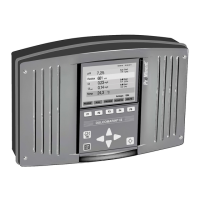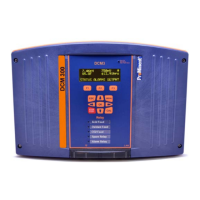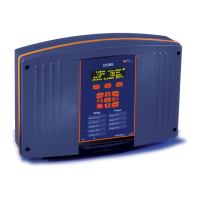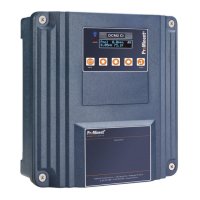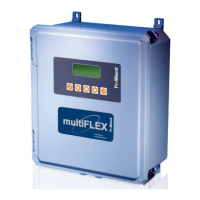PI controller:
This controller type is used with a non-inte‐
grating control path (e.g. flow neutralisations).
Here excess fluctuation must be avoided. No
permanent control deviation must occur. The
setpoint must always be adhered to. A constant
addition of metering chemicals is required. It is
not a malfunction when the controller does not
stop metering when the setpoint is reached.
PID controller:
This controller type has the properties of a PI
controller. Due to the differentiating control part
[D]
, it also offers a certain level of foresight and
can react to forthcoming changes. It is used
when measurement spikes occur in the meas‐
urement curve and these must be quickly regu‐
lated out.
11.2 Control parameter
[System response]
You can set the system response of the con‐
troller under the menu option
[System response]
.
Standard
The controller reacts with its P, PI or PID
system response as described in
Ä Chapter
11.1 ‘Control parameter [Type]’ on page 127
.
[Standard]
is the selection for
[1-way ]
con‐
trolled processes.
[Dead zone]
The
[Dead zone]
is defined by an upper and
lower setpoint. The
[dead zone]
only operates
with a
[2-way]
[control]
, if an actuator is avail‐
able for each direction.
The
[dead zone]
should have the effect of pre‐
venting the control path from starting to oscil‐
late. If the measured value lies within both the
setpoints, then no control of the actuators takes
place. In this case even a PI/PID controller
does not activate its actuators. The
[dead zone]
is used with a
[2-way]
neutralisation.
11.3 Control parameter [Set‐
point]
The setpoint specifies the target value for con‐
trol. The controller attempts to maintain the
deviation between the setpoint and the actual
value (measured value) as close to
‘0’
as pos‐
sible.
Setting the
[Control]
128
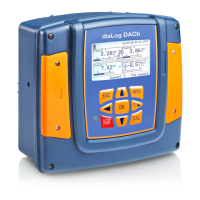
